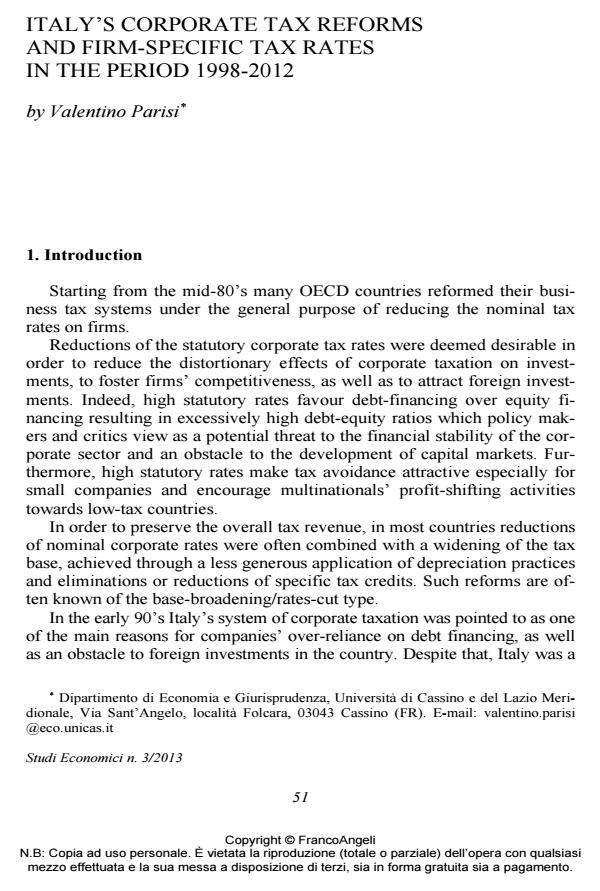Italy's corporate tax reforms and firm-specific tax rates in the period 1998-2012
Journal title STUDI ECONOMICI
Author/s Valentino Parisi
Publishing Year 2015 Issue 2013/111
Language Italian Pages 18 P. 51-68 File size 83 KB
DOI 10.3280/STE2013-111003
DOI is like a bar code for intellectual property: to have more infomation
click here
Below, you can see the article first page
If you want to buy this article in PDF format, you can do it, following the instructions to buy download credits

FrancoAngeli is member of Publishers International Linking Association, Inc (PILA), a not-for-profit association which run the CrossRef service enabling links to and from online scholarly content.
This article examines the key features of the corporate tax reforms introduced in Italy from 1998 to 2012 and analyses their impact on firms’ tax burden. To this end the author calculates firm-specific average and marginal tax rates for a panel of firms of the manufacturing sector. Results show that the tax reforms generally reduced the firms’ tax burden, though with different effects as to neutrality of the corporate tax system over company financing choices.
Keywords: Corporate tax reforms, ACE systems, firm-specific effective tax rates, Italy
Jel codes: H25, H32
Valentino Parisi, Italy's corporate tax reforms and firm-specific tax rates in the period 1998-2012 in "STUDI ECONOMICI " 111/2013, pp 51-68, DOI: 10.3280/STE2013-111003